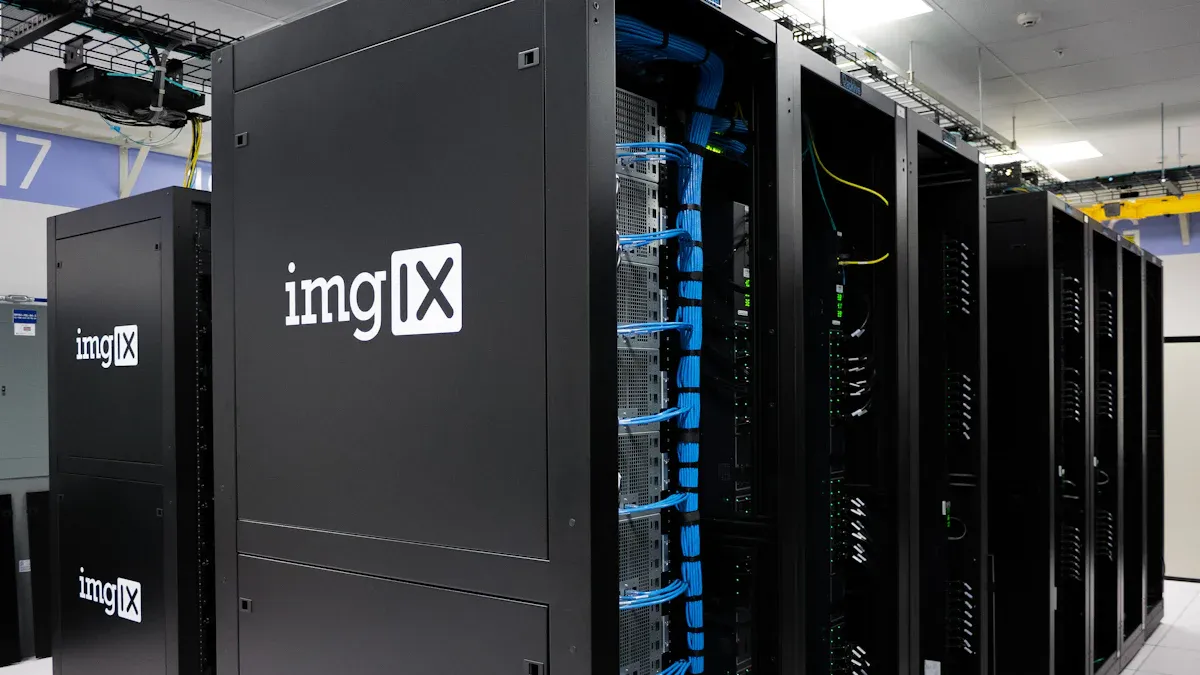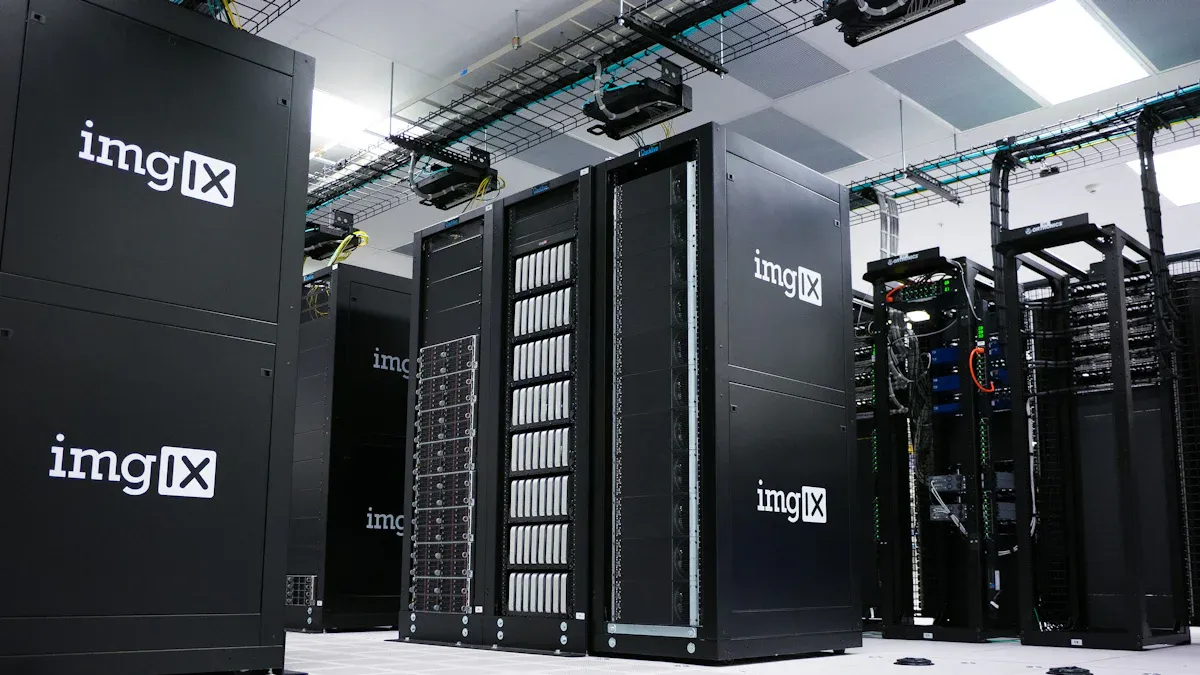
A Basic PDU is an essential device for distributing electrical power to multiple devices in IT environments. It guarantees stable and reliable power distribution, minimizing risks such as voltage fluctuations. Its straightforward design makes it an ideal option for setups like server room PDUs, where horizontal rack PDUs are frequently utilized. Furthermore, its cost-effectiveness enables businesses to address various power requirements without exceeding their budgets.
Key Takeaways
- Basic PDUs give steady power, keeping devices working smoothly in IT spaces.
- They are affordable and easy to use, perfect for small setups like offices or server racks.
- When choosing a PDU, think about power needs, mounting choices, and room to grow for future needs.
What is a Basic PDU?

Definition and Purpose
A Basic PDU, or Power Distribution Unit, is a device designed to distribute electrical power efficiently across multiple devices. It serves as a foundational element in IT infrastructure, ensuring stable and reliable power delivery to connected equipment. By focusing solely on power distribution, it eliminates complexities associated with advanced features, making it an ideal choice for environments that prioritize reliability and simplicity.
Tip: Basic PDUs are categorized into Standard PDUs, which function like power strips, and Monitored PDUs, which provide basic electrical data displays. Both types offer cost-effective solutions for power distribution in server racks and other IT setups.
Primary Functions
Basic PDUs perform several critical functions that enhance the safety and reliability of electrical systems:
- Power Distribution: They act as a central hub, delivering consistent power to multiple devices without interruptions.
- Circuit Protection: By reducing the risk of overloading circuits, they safeguard connected equipment from electrical damage.
- Energy Efficiency: Their design ensures efficient energy management, minimizing waste and optimizing power usage.
These functions make Basic PDUs indispensable in IT environments, where uninterrupted power is crucial for maintaining operational continuity. The global data center rack PDU market, projected to grow from USD 1.6 billion in 2023 to USD 2.9 billion by 2032, underscores their increasing demand.
Key Features
Basic PDUs offer several features that cater to the needs of IT professionals and businesses:
- Simplicity: Their straightforward design focuses on essential power distribution, avoiding unnecessary complexities.
- Reliability: They ensure consistent power delivery, making them suitable for users who prioritize dependability over advanced functionalities.
- Cost-Effectiveness: As a budget-friendly solution, they enable businesses to meet power distribution requirements without overspending.
| Feature | Description |
|---|---|
| Simplicity | Focuses on core power distribution functions without advanced monitoring tools. |
| Reliability | Reduces risks like circuit overloads, ensuring uninterrupted power delivery. |
| Cost-Effectiveness | Provides an affordable option for IT setups and data centers. |
These features highlight why Basic PDUs remain relevant in 2025, especially for organizations seeking efficient and economical power management solutions.
Why Basic PDUs Are Still Relevant in 2025
Advantages of Using a Basic PDU
Basic PDUs offer several advantages that make them indispensable in modern IT environments. Their straightforward design ensures reliable power distribution without the need for complex configurations. This simplicity reduces operational errors and enhances overall efficiency.
- Cost-Effective Power Distribution: Basic PDUs transform a single high-amperage UPS outlet into multiple low-amperage outlets, making them ideal for network cabinets and small-scale setups.
- Space Optimization: Their compact size maximizes space in rackmount setups, a critical factor in environments with limited room.
- Ease of Use: With no advanced features to manage, Basic PDUs are easy to install and operate, making them practical for offices, hospitals, and small server rooms.
- Dependable Performance: They provide consistent power delivery, ensuring uninterrupted operations for connected devices.
Note: The global market for power distribution units is projected to exceed $12.25 billion by 2037, highlighting the sustained demand for both basic and advanced PDUs.
Common Use Cases in IT and Data Centers
Basic PDUs play a vital role in various IT and data center applications. Their reliability and simplicity make them suitable for environments that prioritize stable power distribution over advanced monitoring capabilities.
- Server Racks: Basic PDUs are commonly used in server racks to distribute power efficiently across multiple devices.
- Edge Computing: As edge computing gains traction, Basic PDUs provide a cost-effective solution for powering smaller, decentralized setups.
- Crypto Mining: In crypto mining operations, they ensure stable power delivery to mining rigs, minimizing downtime and maximizing productivity.
- Small-Scale Applications: Offices, hospitals, and small server rooms benefit from their affordability and ease of use.
The rising demand for data center infrastructure, driven by cloud computing and high-density server deployments, underscores the relevance of Basic PDUs in 2025. Their ability to meet efficient power distribution needs makes them a preferred choice for many organizations.
Cost-Effectiveness and Simplicity
The cost-effectiveness of Basic PDUs stems from their minimalistic design and efficient functionality. They eliminate the need for advanced features, focusing solely on reliable power distribution. This approach not only reduces initial costs but also minimizes ongoing maintenance expenses.
| Metric | Result |
|---|---|
| Energy consumption reduction | Up to 20% |
| Annual savings from optimized PDUs | 261,000 kWh |
| Annual savings by U.S. GSA | $13.5 million |
Their simplicity further enhances their appeal. Basic PDUs require no complex configurations, making them accessible to users with minimal technical expertise. This ease of use ensures quick installation and seamless integration into existing setups.
Callout: Factors like cloud computing, edge computing, and the proliferation of data centers continue to drive the demand for Basic PDUs, solidifying their relevance in 2025 and beyond.
Comparing Basic PDUs to Advanced PDUs

Key Differences Between Basic and Smart PDUs
Basic PDUs and Smart PDUs serve distinct purposes in IT environments. While Basic PDUs focus solely on power distribution, Smart PDUs incorporate advanced features for monitoring and management.
| Feature | Basic PDU | Smart PDU |
|---|---|---|
| Monitoring Capabilities | None | Real-time monitoring of power usage |
| Remote Management | Not available | Control individual outlets remotely |
| Energy Efficiency | Basic power distribution | Optimizes energy consumption |
| Scalability | Limited to small setups | Adapts to dynamic IT environments |
| Cost Considerations | More affordable | Higher cost due to advanced features |
Smart PDUs provide additional functionalities like remote management, environmental monitoring, and power usage reporting. These features enable data center managers to optimize infrastructure, reduce costs, and enhance security through encryption and anomaly detection.
When to Choose a Basic PDU
A Basic PDU is ideal for setups that prioritize simplicity and cost-effectiveness. Small-scale environments, such as offices, hospitals, and edge computing sites, benefit from their straightforward design. They are also suitable for server racks where advanced monitoring is unnecessary.
Organizations with limited budgets or minimal technical requirements often prefer Basic PDUs. Their reliability and ease of use make them a practical choice for applications that demand stable power distribution without additional complexities.
Tip: For environments requiring real-time monitoring or remote control, Smart PDUs offer a better fit despite their higher cost.
Factors to Consider When Selecting a PDU
Selecting the right PDU involves evaluating several factors:
- Power Requirements: Match the PDU to the equipment’s power needs, considering future expansions.
- Mounting Options: Choose between horizontal (19-inch) or vertical (0U) configurations based on rack design.
- Voltage and Phase Types: Ensure compatibility with the facility’s power supply, whether single-phase or three-phase.
- Future Scalability: Opt for a PDU that supports additional outlets and higher capacity ratings.
- Safety Standards: Verify compliance with international safety standards to protect connected devices.
Callout: Advanced features like remote control and environmental monitoring can enhance management but may not be necessary for all setups.
By assessing these factors, businesses can select a PDU that aligns with their operational needs and budget constraints.
Basic PDUs remain indispensable in 2025 due to their simplicity, reliability, and cost-effectiveness. They ensure stable power distribution, making them ideal for IT environments.
- Key Considerations for Selection:
- Saves Time: Quickly narrows down options.
- Improves Accuracy: Matches exact requirements.
- Enhances Efficiency: Reduces energy waste.
| Key Considerations | Description |
|---|---|
| Industry Expertise and Proven Track Record | Manufacturers with extensive experience deliver superior, reliable solutions. |
| Customization Capabilities and Product Range | Diverse options address unique operational needs effectively. |
| Quality Assurance and Certifications | Adherence to standards ensures reliability and operational excellence. |
By evaluating these factors, businesses can optimize power distribution while minimizing costs.
FAQ
What is the lifespan of a Basic PDU?
A Basic PDU typically lasts 8-10 years, depending on usage and environmental conditions. Regular maintenance can extend its operational life.
Can a Basic PDU handle high-density server racks?
Yes, Basic PDUs can support high-density server racks when matched with the appropriate power capacity and outlet configuration.
Are Basic PDUs compatible with renewable energy sources?
Basic PDUs work seamlessly with renewable energy systems, provided the input voltage and phase match the PDU’s specifications.
Post time: Jun-06-2025





